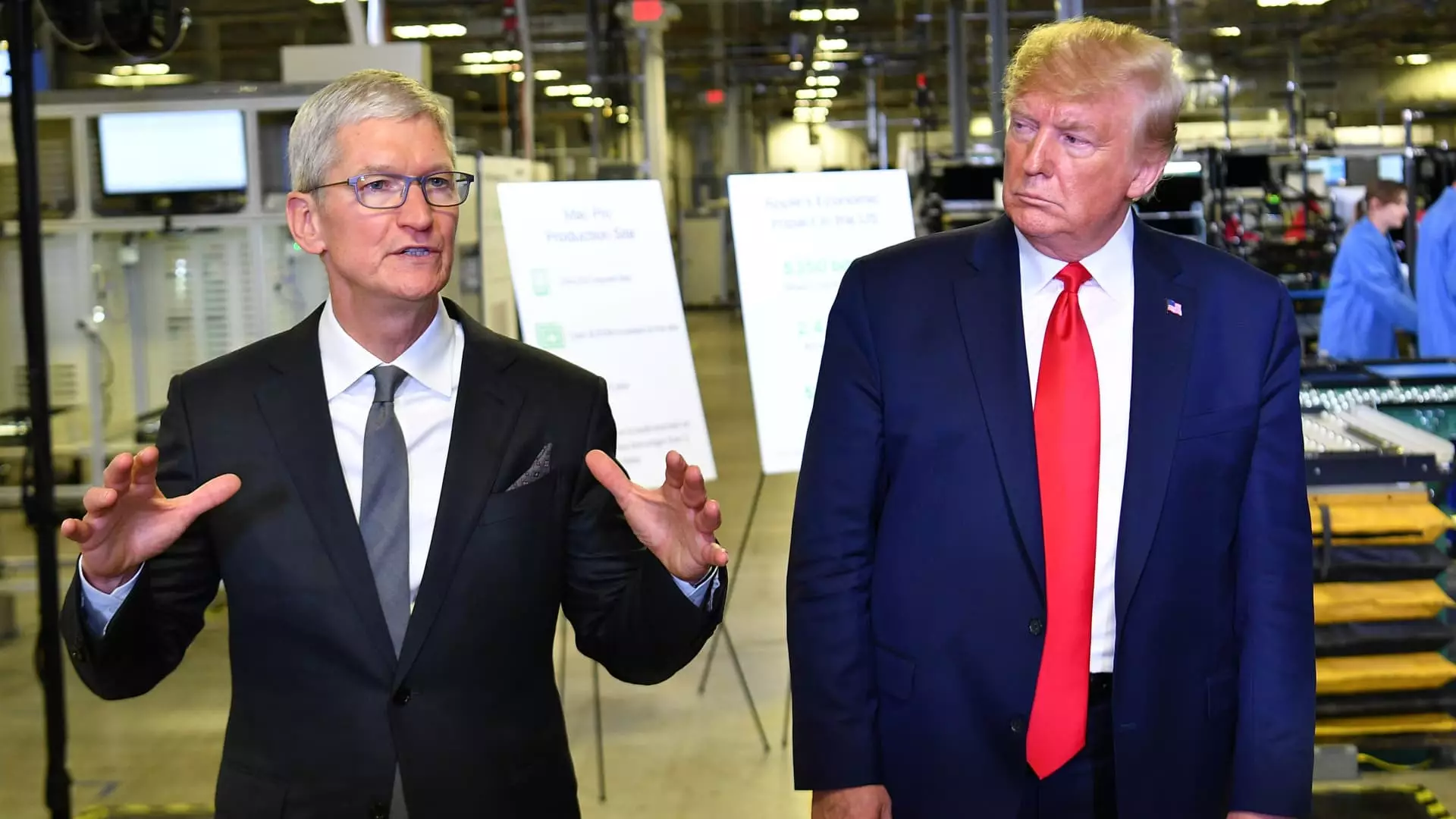In a shockingly bold assertion, former President Donald Trump has threatened Apple with a staggering 25% tariff on iPhones manufactured outside the U.S. The blatant call-out on social media isn’t just about trade; it’s indicative of a broader strategy designed to stoke nationalistic sentiments while putting pressure on one of the world’s most valuable companies. Trump’s statement, shared via his Truth Social platform, emphasizes his long-standing expectation that tech giants, particularly Apple, should adhere to patriotic principles by shifting their manufacturing bases back to the United States. The implications of this move are profound, and one might argue that it’s less about commerce and more about conflating business with political maneuvering.
Jobs or Just a Political Ruse?
When Trump demands that Apple produce iPhones on U.S. soil, the narrative is primarily cloaked in the promise of job creation and economic revitalization. However, this sentiment becomes suspicious when considered against the backdrop of how sharp tariffs could shift production costs. Analysts have suggested that shifting iPhone manufacturing to America could potentially elevate the retail price from a current $1,000 to as high as $3,500. This isn’t merely an adjustment in price; it translates to consumers getting squeezed even more—essentially forcing families and individuals to bear the brunt of a geopolitical chess game. Are American jobs truly a priority, or are they merely a collateral benefit in Trump’s wider ambition to appear tough on foreign trade?
The Dance with Tim Cook
Interestingly, the power struggle doesn’t exist in a vacuum. Trump’s prior meeting with Apple CEO Tim Cook at the White House emphasizes the diplomacies and negotiations at play. Cook’s significant contributions to Trump’s inauguration fund might suggest a favorable connection, yet the recent threats paint a picture of a turbulent relationship. It’s almost as if Cook is caught in a trap; he must balance political pressures with shareholder expectations and global supply chain realities. With Apple’s share value taking a hit in response to Trump’s outcry, it becomes increasingly dubious whether the company can sustain profitability while adhering to nationalistic demands.
Trump’s Tariff Tactics: A Precarious Precedent
By threatening specific tariffs, Trump is venturing into uncharted territory that raises concerns about setting precedents for the future. His approach echoes the volatile methods employed during his presidency, where threats of tariffs became a means to achieve political gain without a comprehensive understanding of their implications on consumer markets. Could this create a domino effect in which other tech companies find themselves staring down the barrel of similar demands? It would be naive to dismiss this specter of heightened corporate scrutiny without considering the long-term impacts on innovation and the hard-won relationships between the U.S. and global manufacturing partners.
The Broader Economic Fallout
The potential fallout of implementing a tariff on Apple could resonate far beyond stock prices and operational costs; it could serve as a catalyst for increased tensions in U.S.-China relations, further destabilizing the already precarious state of global trade. Apple has seen its demand dwindle in regions like China, a critical market, which signifies a need for strategic adaptations rather than jingoistic posturing. The interference of political figures in corporate matters could further scare off investments that are essential for growth and development.
Moreover, as Apple’s manufacturing partner Foxconn expands its facilities in India with a hefty investment of $1.5 billion, it illustrates the stark reality of a shifting global landscape, where economic cooperation can often yield better results than combative trade policies.
The iron grip of tariffs could have a disproportionate effect not just on Apple, but also on consumers and the economy at large—a risk that cannot be overlooked. Trump’s appetite for hasty tariffs raises serious questions about the future of American innovation and competitiveness in the global marketplace. If anything, the lessons from this unfolding saga call for a more nuanced understanding of trade dynamics that transcend the belligerent rhetoric of politicians.



Leave a Reply